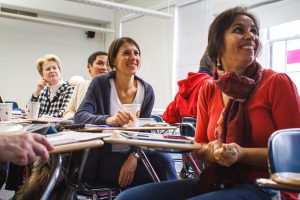Members of our team have been working on a pilot project to migrate aspects of our teaching and learning professional development offering to an online, self-paced, asynchronous format to better support our faculty, staff, and students with busy schedules.

Even though I have been facilitating blended Instructional Skills Workshop (ISW) for a few years, it was a steep learning curve for me to learn how to design a completely stand-alone module online with interactive mechanisms for feedback and/or assessment. It quickly became apparent that my familiarity with the subject matter prevented me to recognizing what is easy and what is difficult for those who are beginning to teach – I had to actively check my own needs to share other interesting relevant concepts and return to those that are aligned with learning objectives. The design process was also challenged by my typical experience of working in a face-to-face format – I found myself having to acquire additional pedagogical content knowledge (Shulman, 1986, 1987) to effectively support learning in a fully online asynchronous format. One of my mentor suggested that I “role play” and really put on the participants’ perspectives when reviewing and revising the online content!
So far, we have developed foundational content intended for those who are beginning to teach and are looking to learn core components of lesson planning. We are launching our pilot this week, with the intention to seek participants’ thoughtful feedback to better support their teaching and learning professional development goals and needs.
Should you be affiliated with UBC, you may self-enroll via https://canvas.ubc.ca/enroll/LB9YAF.
References:
- Shulman, L. (1986). Those who understand: Knowledge growth in teaching. Educational Researcher. 15(2): 4-14.
- Shulman, L. (1987). Knowledge and Teaching: Foundations of the new reform. Harvard Educational Review. 57: 1-22.
 Photo Credit:
Photo Credit: 